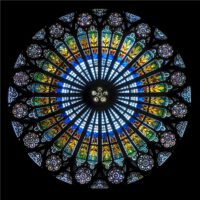For every action, we have to relate the positional spatiality of our body to the situational spatiality of the object. In this way, the physical space of a staircase clearly reflects our concept of movement. The memory reference of our visual space forms our matrix of thought and action, as all the actions we can imagine are represented in it. If we lose this information as a result of brain damage, we can no longer see what our body and the objects in our environment are used for and how they are used. They keep their name and lose their properties.
All voluntary body movements are controlled by the motor cortex of our brain. This also includes the eye muscles, which form an integral part of our muscle and joint system. Eye movements therefore also represent actions through which we anticipate future events. To coordinate our eye movements, we need specific action concepts that are stored as knowledge in our declarative memory. On the other hand, our gaze is guided along the contrast boundaries in the color and light structure of the environment. This results in the vivid formal language of all things that communicate their “instructions for use” to us, insofar as we can “read” them. We experience the formal language of nature as functional because we have adapted to it in the course of evolution. Visual design, on the other hand, is only functional to the extent that it informs us about the functional properties of things.
Our ability to see can be promoted indefinitely in almost all fields of activity. This is the reason for the difference between laypersons and experts. In this way, a coach can predict the course of the game, the architect the building and the doctor the success of the treatment. The development of spatial-visual competence includes the methodical promotion of our ability to anticipate possible courses of action and functional contexts. The resulting matrix of thought and action in the brain enables us to plan future events.


